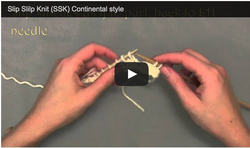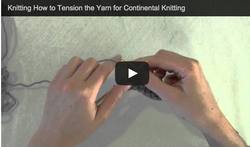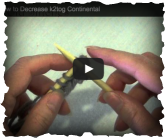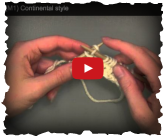How to KFB (knit front and back) increase continental style
More videos you might like...
 How to SSK (slip slip knit) continental style How to SSK (slip slip knit) continental style
How to SSK (slip slip knit) continental style
The slip slip knit (ssk) is another type of decrease, often used along with the k2tog in lace knitting. The important difference is in the stitch mount of the stitches knit together. |
 How to tension the yarn for continental knitting How to tension the yarn for continental knitting
How to tension the yarn for continental knitting
Tensioning the yarn for continental knitting is a subtle technique that is very important to master to be successful at continental knitting. |




